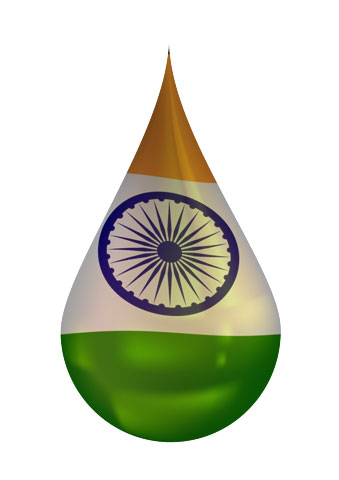India is the third-largest lubricant-consuming market in the world at approximately 2.3 million metric tons in 2015, according to Kline’s estimates. Generally, the Indian finished lubricant market has outpaced global finished lubricant demand growth. Since 2010, the finished lubricant demand growth in India has exceeded the global finished lubricant demand growth, except for 2013, where demand fell marginally in the country. The penetration of higher quality lubricants in India compared to the developed markets, such as North America and Western Europe, is small; however, the market is exhibiting a clear shift towards the use of better quality lubricants and basestocks.
According to Anuj Kumar, Project Manager in Kline’s Energy Practice, “This play toward Group II is eerily similar to the same shift that was seen in developed markets. Government regulations, fuel economy mandates, and lube performance demands by OEMs, coupled with the enticing pricing for Group II (as compared to Group I) has brought about this sense of déjà vu in the market.”
Governmental actions such as the announcement that they will skip Bharat Stage (BS) V emissions regulations, and will shift the current BS IV to BS VI in 2020; as well as a stronger fuel economy mandate takes effect next year, and OEM recommendations in India are already merging with global specifications. As a result, the market shift will have India looking more like a developed finished lubricant market.
Kumar adds, “Group III will witness the fastest growth in India through 2020; meanwhile, Group II will grow the most volumetrically. Nonetheless, the increased availability and attractive pricing of Group II has forced the hand of this shift. Oftentimes, Group II neutrals have been cheaper alternatives to their Group I counterparts.”
This will create greater demand for Group II and other high quality basestocks and limit the market for Group I. As a result, high quality basestocks will grow at a significantly higher rate than Group I. Despite the limited growth outlook for Group I, it will continue to grow in applications that require high viscosity and solubility. These applications include marine, metalworking fluids, monogrades, heavy industrial gear oils, and greases. However, naphthenics can take some demand away from Group I since it offers good solvency for additives.
Historically, India reacts quickly to changing price dynamics and may substitute one basestock with another. The switch is difficult to make in blending top-tier lubricants. This switch is witnessed in the products that are not specification/recommendation-driven. As penetration for high quality lubricants grows, the room to exercise this switch will remain limited. In conclusion, the stronger lubricant demand growth outlook (as compared to most other markets) and the continuous shift towards better quality lubricants make India an attractive and hot spot for global basestock suppliers.
These findings and more will be available in the Opportunities in Lubricants: India Market Analysis report which is estimated to be available later this year.

